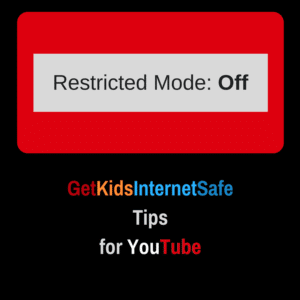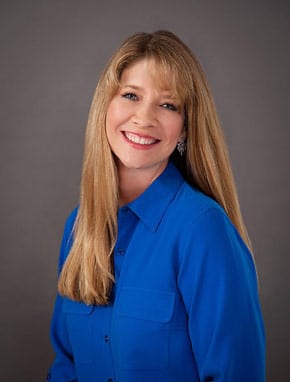
Did your kids watch endless hours of YouTube this summer? If so, they are not alone. Limitless quantities of content has made YouTube the second most visited website in the world; FaceBook is number one. Famous YouTube stars, like PewDiePie and Smoosh, boast over 56 million subscribers and 15 billion views! That translates to a $15 million dollar paychecks and enormous influence over our kids. This morning I appeared on Access Hollywood Live to answer parent questions about YouTube. What is the appeal for kids, and what do parents need to know?
What do kids watch?
YouTube offers content for any viewer appetite. That too often means sex, violence, alcohol and drugs, product sales, and beauty tips. Kids and teens particularly love music videos, let’s play videos, and vlogs created by YouTube celebrities (“YouTubers”).
Let’s Play videos show YouTube celebrities playing popular video games, commenting and demonstrating game strategies along the way. There are Let’s Play videos that are safe for kids. Others are full of f bombs and inappropriate commentary. Famous YouTube personalities, like Shane Dawson, Smoosh, Trisha Payatas, Jenna Marbles, and Gigi Gorgeous, specialize in sharing opinions, intimate details, and information, acting out silly skits, testing products, and acting out pranks and challenges. Kids become devoted fans, memorizing personal details and impersonating their styles after watching endless hours of curated content.
What is YouTube’s appeal for kids?
The BIG appeal is that it’s a kids-only community without parent interference. We simply “don’t get it.” Kids love having this scene all to themselves, not unlike the rock-n-roll community in the 1950s. YouTubers feel like friends. Through intimate disclosures and humor, YouTubers are that crazy Uncle or zany Aunt you followed around during dull family reunions, because they horrified everybody else. Kids report that YouTube personalities are relatable and more authentic than PR-managed movie celebrities. Kids find them inspirational, admiring that they have fame and fortune simply from play.
What age do kids start watching YouTube?
Kids see YouTube videos as soon as they’re old enough to type in a browser. That means parents need to be proactive.
5 GETKIDSINTERNETSAFE TIPS FOR YOUTUBE VIEWING
Stage your home
Set up screens so you can supervise (no bedrooms, no bathrooms, no closed doors).
Dock all devices at night in a community docking station.
Install a family-friendly router with content filters.
Keep in mind what safety measures are in place at other houses they visit.
Stage your device
If your kids are 3 to 8 years old, use the YouTube Kids.
For older kids, turn on the restricted mode at the bottom of the YouTube screen. This will filter out videos that have been flagged by other users and contain inappropriate content.
Set your parental controls on devices and through your Internet service provider.
Use a childsafe browser.
Set rules about viewing AND posting
Viewing: Be specific about what’s OK for your kids to watch and what isn’t. YouTube celebrities and Let’s Play videos can be raunchy and filtering is never perfect. Watching over their shoulders and checking their browser histories are your best monitoring options. Unfortunately though, they may be using the private browsing option. If an ad precedes the video, that’s a sign that an advertiser thought it was “clean” enough to place their ad. Checking out the videos that YouTube recommends based on previous viewing is another slick way to get an idea about what types of videos your kids have been selecting.
Posting: If your child wants her own channel, consider the consequences of others viewing silly and sometimes inadvertently sexual performances. Kids emulate what they see and sometimes have no idea what it means. Thanks to popular music videos, it’s not much to imagine your eight year-old dancing sexy while it rains dollar bills, for instance. If you decide to take the risk, set your child’s YouTube channel on private and be vigilant for unknown subscribers. Remember, kids post what they think will be watched and “liked” (sensational or off-color humor). Enforce the “Grandma rule,” which means don’t post anything you wouldn’t want grandma to see.
Set time windows
No-screen windows, like #NoTechTuesday, never before school, and not until early evening after homework, forces kids off their screens and into real life conversations, books, play dates, and backyard adventures. Balance between online and offline interactions is key to healthy socioemotional development.
Do your job
Outsourcing parenting because you don’t have the time or energy is a mistake. Carve out time, co-view videos, and have fun sharing with each other. Kids don’t learn morals, values, and good judgment without a lot of teaching from us. Tell them what’s out there and SPECIFICALLY what to do when they accidentally view or post something inappropriate. Help them generate solutions to digital problems and imagine the consequences of each. All kids will make a lot of mistakes on- and offline before they’re adults. Stay firm but also warm with a sense of humor.
Want to learn about your child’s next obsession, Instagram? Check out my GetKidsInternetSafe article The GKIS Sensible Parent’s Guide to Instagram.
I’m the mom psychologist who will help you GetKidsInternetSafe.
Onward to More Awesome Parenting,
Tracy S. Bennett, Ph.D.
Mom, Clinical Psychologist, CSUCI Adjunct Faculty
GetKidsInternetSafe.com
Don't worry, we will never spam you.









